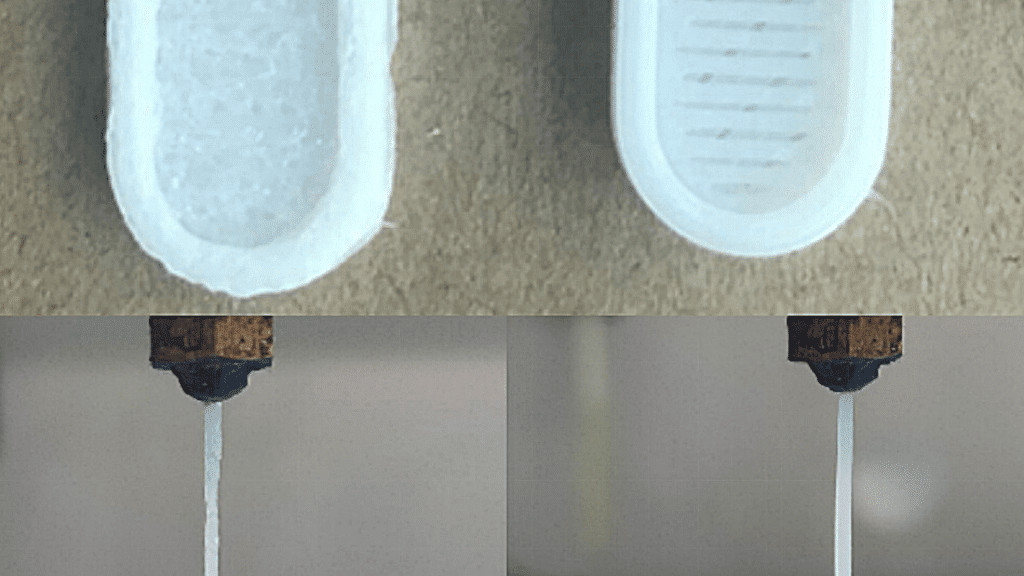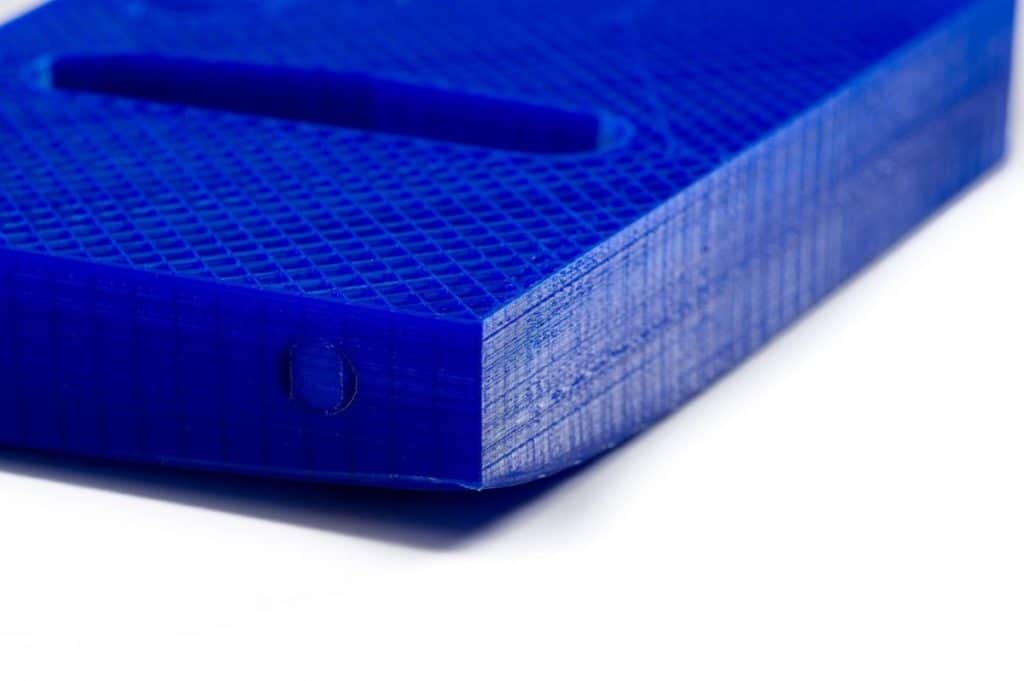If you thought that any filament was suitable to be used outdoors and that all of them would be able to handle being exposed to the elements equally, you’d be wrong… but don’t worry, we’ve all been there, which is the reason why I decided to write this article, since I want your 3D prints to last you as long as possible, even when left out in the sun and the rain.
I will go into all the things you need to consider when making your filament choice, as well as give you my opinion on which ones you should use and just as importantly, which ones you shouldn’t use.
You are watching: Best 3D filaments for outdoor use!
So, let’s get things started with a quick table that should help you get an idea of what filament is best for outdoor use:
Important things to consider when choosing a filament for outdoor use:
UV Resistance

An important factor to consider when making 3D FDM filament prints for outdoor use or display is the effect of UV light on the print.
UV light tends to bleach and break down PLA filament prints over time, causing the color to fade and the print to become brittle. The amount of time before the degradation becomes visible depends on how extreme the weather conditions are as well as the use of the print.
PLA filament is susceptible to high heat conditions that will result in melting and deformation. ABS filament is also not UV resistant and when exposed to sunlight over time will begin changing from a translucent print, taking on a yellowish burnt look, and the print will also become brittle.
PETG and ASA filaments are UV resistant and can withstand different weather conditions, making them suitable for both indoor and outdoor use.
Temperature resistant (and glass transition temperature)
Temperature can be a controversial subject when it comes to how glass transition temperature is calculated for different polymers. There are a few different definitions with different results, and all seem to be accepted.
It is generally accepted that glass transition temperature is the temperature range at which a polymer will begin melting or changing state. For example, PLA has a glass transition temperature of 43.89 degrees C to 62.78 degrees C.
PLA has the lowest glass transition temperature of all FMD filaments and has a low-temperature resistance. Temperature resistance is calculated at the highest and lowest temperature that a print can withstand before it is adversely affected either through melting (deforming the print) or cracking.
Thermoplastic should not be hygroscopic

Thermoplastics that are hygroscopic absorb moisture from the air and can cause a host of printing problems. The severity of moisture impact on printing depends on humidity levels and prolonged exposure to the humidity.
Under normal conditions, exposed PLA filament will absorb moisture and swell up to 40 micrometers in about 150 hours. Because each print layer is so fine, an increase in filament diameter of 20-40 microns from moisture can be catastrophic, and the print will be doomed from the beginning.
Thermoplastic should not be hygroscopic, but unfortunately many are.
Read more : Indoor Vs. Outdoor Extension Cord, What To Choose?
The different types of thermoplastics in 3D printing each have varying degrees of moisture absorption, for example; Nylon filament stored in normal conditions will reach moisture saturation point in as little as 18 hours.
Some effects of moisture ridden filaments include popping noises, bubbles, and steam coming from the extruder nozzle. Filament will lose its ability to stick to the print bed and in most cases, prints will fail, becoming soft and fragile.
The extruder nozzle will not function normally with delayed starts and will possibly jam as a result. To remedy moisture-related problems, it is advisable to purchase a temperature (and moisture) controlled filament storage cabinet. The feed mechanism on most printers ensures that the filament remains dry during printing sessions.
How easy it is to print?

PLA filament is the easiest to print with, thanks to its low heat requirement and the post-curing process can present a fine smooth finish, but you will lack the ability to print fine detailed structures.
PETG, ASA and other filaments require higher temperatures and heated build plates but are also reasonably simple to print with.
Hobbyist filament printers are mostly open printers, but some printers have enclosed cases which is better as there is more control of the printing environment.
The heating and cooling process while printing will not be influenced by the printing room’s ambient temperature. Before you try different filament types make sure that your printer has the capacity to print with the new filament since not all printers are capable of printing with all filament types.
Are all filament types good for outdoor use?
All filament types are fine for outdoor use, but some that are not UV resistant will require post-production curing by applying a UV resistant epoxy to the print.
There will still be slow degradation over time, but the UV protection will ensure a decent lifespan.
The outdoor function of your print will determine its longevity. Ornamental prints will tend to last longer while prints that serve a functional purpose may have a shorter lifespan depending upon what the print is used for.
Type of materials you can use Outdoors
While you could certainly use most filament types outdoors, some will get brittle fairly quickly. So, here are the ones I recommend the most:
- PETG: PETG filament is not biodegradable but it’s easy to work with as it does not require a printing enclosure. An added bonus is that it is UV and water-resistant, so it is an excellent filament for outdoor use. Its tensile strength is almost as good as ABS but is more durable despite ABS being harder and producing a more rigid print. PETG has a fairly high glass transition temperature of 80°C and produces dense prints. A heated bed at approximately 70°C is a prerequisite for successful printing.
- ASA: ASA is very similar to ABS filament but has the distinct advantage of being UV resistant and can withstand all weather conditions. It requires a heated bed at 90-110°C and the printer must be enclosed due to its sensitivity to temperature changes while printing. It is best to turn off the cooling fans while printing. With a glass transition temperature of 100°C, prints have high-temperature resistance and impact and chemical resistance.
- ABS: ABS has the disadvantage of not being UV resistant, but it does fair better than PLA to the outside conditions. However, printing is challenging for same reasons as ASA filament. It requires a heated bed of between 90°c and 110°c and must be printed in an enclosed printer (it can be printed without an enclosure, but it’s harder). ABS prints are very sturdy and hard. They work great for machine parts, but their lack of UV resistance limits their outdoor use.
Filament types you should avoid for outdoor use
3D filament to avoid using outdoors includes nylon, PLA, and HIPS, because of their lack of UV resistance. UV rays will cause the print to lose its color and become brittle over time.
HIPS is said to be food-safe and non-toxic, but it does release small amounts of styrene into the air that can become a health concern over time. It will affect people working in close proximity for extended periods of time.
Why should I avoid PLA parts for outdoor use?
PLA does not fare well in sunlight as it is not UV resistant. However, it is cheap and biodegradable (sort of, if exposed to the right conditions).
Prints, however, will not last that long as they will become brittle and break up. PLA also doesn’t do that well in high temperatures due to its low glass transition temperature at 60°C and will begin to deform at temperatures in the mid-forties, and if left in the sun during the summer, you will notice it becoming weaker.
Read more : List of best glues for plastic
Being hygroscopic means that it absorbs moisture, which may weaken the print, but it will not speed up the decomposition process. Yet PLA is said to decompose 4 times faster than other popular filaments. There are reports that PLA will completely decompose in water within about 90 days, but this is a myth.
For PLA to live up to its biodegradable label, it must be composted at an industrial site explicitly designed for that purpose. It can take anywhere from a few days to a few months and temperatures must be above 55-70°C!
Best Filaments for pots
After doing some testing, we found out that even though PLA will work for some time, it will end up degrading because of the UV light. So, the best filaments to print flower pots with are PETG and ASA simply because they won’t deteriorate as much nor as fast.
Can I use resins (photopolymers) for outdoor use?
Resin-based prints are cured with UV light, and the curing process will continue when exposed to sunlight, albeit at a slower rate. This will eventually harden the resin print to such an extent that it will become brittle and eventually crack or break.
So, no! I wouldn’t recommend resin for outdoor use.
How can I make any filament UV resistant?
Print material that is not UV resistant can be treated with a clear UV protective varnish which can either be painted or sprayed over the print.
If the print has an outdoor function that will result in wear and tear, the UV protective layer may get rubbed off over time, and the print will quickly lose it’s overall strength.
It’s good to understand that degradation caused by UV exposure is a slow process with color fading or bleaching as the first visible sign of UV damage. This will be followed by the structure’s breakdown, causing flaking with weaker areas breaking off when handled.
Preferably use a UV and weather-resistant filament for outdoor projects and have peace of mind knowing your print will last.
Conclusion
As you can see, the best filaments for outdoor use are PETG and ASA because of their UV resistance and overall high temperature resistance.
PLA is the worst one of all because it can easily deform in a hot day, especially if you’re using the print for something functional, like a lamp holder, since the additional weight of the lamp may cause it to sag.
ABS is way better than PLA for the outdoors, but it’s still nowhere near as good as PETG and ASA.
I hope this information was useful and as always, have a great day!
Check out our recommended products section

We created a recommended products section that will allow you to remove the guesswork and reduce the time spent researching what printer, filament, or upgrades to get, since we know that this can be a very daunting task and which generally leads to a lot of confusion.
We have selected just a handful of 3D printers that we consider to be good for beginners as well as intermediates, and even experts, making the decision easier, and the filaments, as well as the upgrades listed, were all tested by us and carefully selected, so you know that whichever one you choose will work as intended.
Source: https://gardencourte.com
Categories: Outdoor

